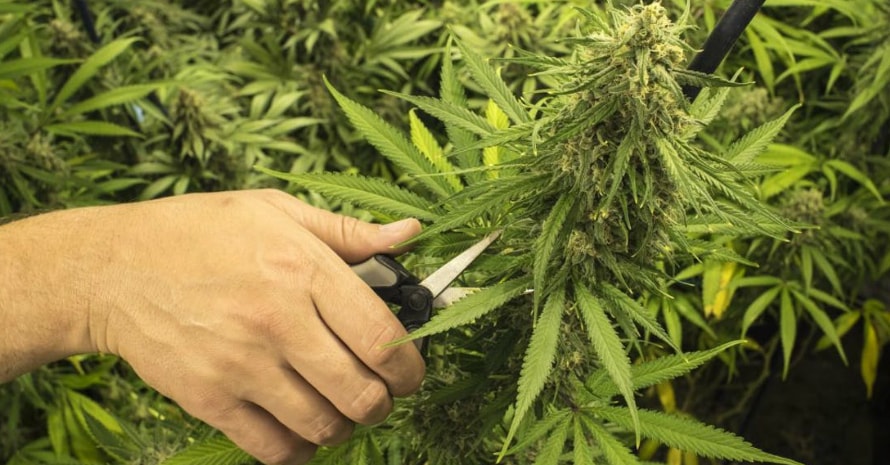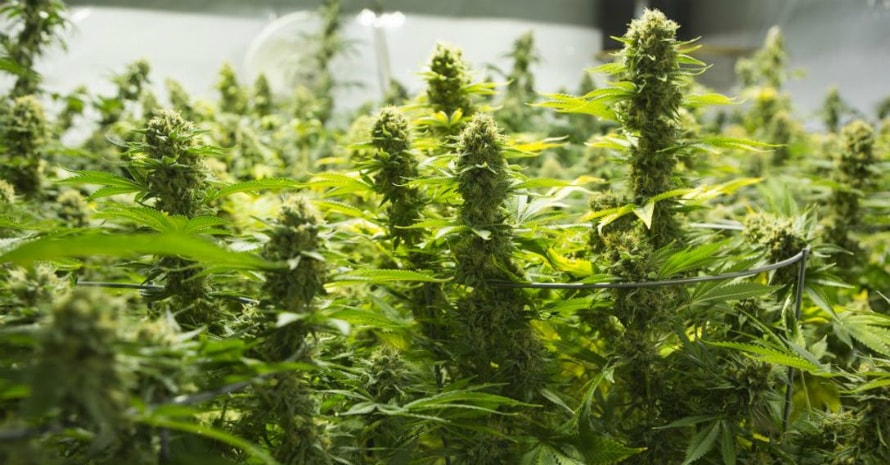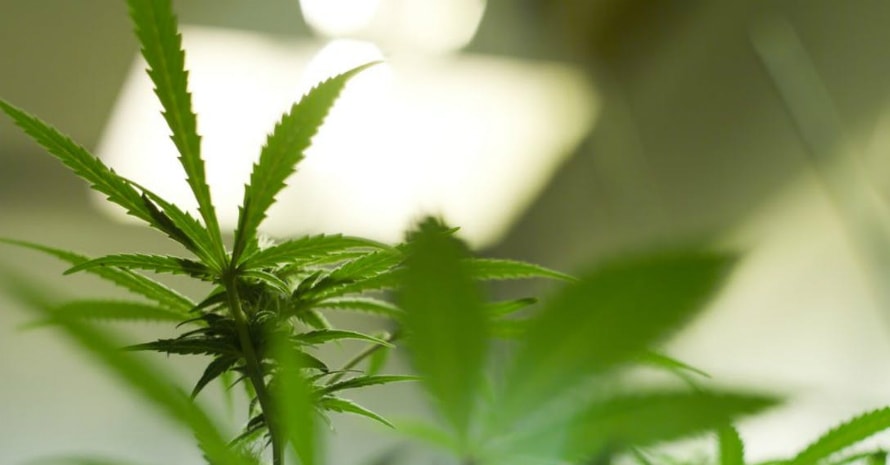
How to Grow Bigger Buds Outdoors: Pro Tips and Comprehensive Guide
The key to a great harvest is cannabis cultivation outdoors. As plants can get natural light and fresh air, they need to grow actively. However, you can’t put them in the ground and just wait for a big harvest. In this article, I will tell you how to grow bigger buds outdoors, offer you my step-by-step guide, and also answer the most burning questions.
It is the buds that cannabis growers pay special attention to, as they are the source of highly concentrated THC. In other parts of the plant, its content is much lower.
From my own experience, I know that the speed of marijuana growing directly depends on its strain (some give more yield than others). It is in your hands to provide the right conditions, feeding, timely pruning, etc. to achieve the best results.
Combining these factors and routine work is the key to understanding how to make my marijuana plants bigger. Besides, it is much easier to grow them outdoors than indoors. So if you have the opportunity to plant marijuana in your yard, that’s half the battle.
Why Are Buds Important and When Do They Develop?
Contents
Hemp contains an active substance from the cannabinoid group called Tetrahydrocannabinol (THC), which has a psychedelic effect on the human body. It reaches its highest concentration during the flowering period of plants, so their buds contain most of this substance. Because of this, cannabis growers value them so highly and do their best to make them grow big.
On average, for a planted hemp to begin to form buds, it takes about one to two months. During this period, it is essential to provide plants with the necessary balance of mineral and organic substances and create proper lighting and aeration. It can take two to five weeks for the bud to develop fully. The term is directly related to the ambient temperature (recommended range 68 to 80°F).
Types of Buds (Male/Female/Hermaphroditic)
For breeding, male and female representatives are needed, but not for growing weed. The so-called male buds contain minimal THC; they mainly produce seeds. Female ones are rich in cannabinoids. It is important to make sure that no male plants grow in your area next to females. Otherwise, this will lead to pollination, and female buds will also begin to produce seeds. To prevent this from happening, look for feminized seeds, or clone female plants that are already growing in your yard.
Determining the gender of a plant is not so difficult. Just look at the junctions of a stem with branches and leaves. For males, pollen sacs are formed there, and for females, white hair (so-called stigmas). The gender should be determined right after the end of a vegetative phase and before bud growth. Helpful fact: buds on female plants usually appear later than male ones (by about two weeks).
Sometimes there are hermaphroditic plants that combine male and female elements. Unfortunately, they are capable of self-pollination and pollination of other female buds. Such a plant’s appearance on the site can be an unpleasant surprise; therefore, you also need to get rid of them timely.
How to Produce Big Buds Outdoors
Now that you are aware of the importance of growing big buds outdoors, I would like to go directly to the key elements that play a vital role in growing marijuana. Use this guide as a step-by-step manual to action.
Step 1: Pruning
It would seem that the larger your bush, the more buds it can grow. However, it is not the case. As with growing any other plant, hemp needs pruning. To do this, you do not need to be an expert, it is enough to know the basics of pruning shrubs. Some parts of a plant grow at the very bottom of a bush or in the shade of larger branches and do not receive enough sunlight, which means they do not develop properly and may not grow at all. You need to get rid of them so that they do not take nutrients from other leaves and branches.
Pruning is recommended during vegetative growth until the beginning of bud formation. Do pruning for bigger buds gradually: first, remove low hanging large branches, then move to the middle of a bush and cut branches under its crown, and then thin out the top of the bush slightly, removing dry leaves and twigs. I recommend doing this with pruning shears; however, you can use a pair of nippers or scissors of your choice, as long as they are clean and well sharpened.
Step 2: Nutrients
In addition to pruning, you can help a plant grow bigger buds by putting them in the nutrient-rich ground or enriching the soil in your area with nutrients. I recommend that you start feeding your cannabis no earlier than three days after the last pruning.
Among the vast assortment, you can find artificial products and organic ones with a natural composition. Hemp primarily needs minerals such as nitrogen, potassium, phosphorus, calcium, sulfur, and magnesium. Phosphorus, along with potassium and nitrogen, makes up three vital nutrients that affect plant development:
- Nitrogen fertilizers are especially useful at the stage of vegetative growth, as they enhance it and, as a result, contribute to higher yields. Besides, they promote faster healing of wounds received after pruning.
- Phosphate fertilizers are a simple answer to how to get bigger buds during flowering outdoors as they should be added precisely during the flowering stage to form large and dense buds.
- Potassium in feed accelerates photosynthesis. It helps a plant maintain constant growth and good health.
Hemp also needs non-mineral elements such as oxygen, hydrogen, and carbon, obtained from water and air. In smaller amounts, it needs zinc, manganese, iron, chlorine, silicon, cobalt, boron, and copper. They have a beneficial effect on the general condition and plant development.
You can find many ready-to-use mixes on the market that combine the above elements in the right proportions. However, there are also more budget options. For example, you can use blood meal as a nitrogen source, bat guano to enrich the soil with phosphorus, wood ash for potassium, and Epsom salts are a great source of sulfur and magnesium. Now you know how to make buds bigger during flowering.
Step 3: Plant training
While growing marijuana outdoors is generally considered easier and less costly, you still have less control over the environment, e.g., lighting. But you can make a plant adapt to these conditions and grow many dense buds throughout a bush. There are several ways to train marijuana.
Low-stress training (or LST)
The method is considered one of the mildest since you do not injure a plant by pruning; at the same time, it is more energy-intensive. Its essence lies in the fact that you bend the main stem of a plant, tying it so that it is lower than other branches. Then this bush does not grow upward in the shape of a candle, but wider. As other parts receive more sunlight, they produce larger buds.
Some growers simplify this process by attaching a thin green netting over hemp bushes. This technique is called scragging. When branches get too long and grow through the net, you simply put them back under it. By using this method, the growth hormone is distributed more evenly.
High-stress training
Methods in this category are more aggressive. For example, many users use the so-called topping; that is, they completely cut off the top of the bush at the vegetative stage of development. After that, the lower branches begin to grow more actively. Of course, the plant will try to grow a new tip instead of the cut off by releasing two fresh branches; then, you will have to cut them as well.
Another stressful technique is called fimming. It involves cutting 75% of the top of a bush. After that, a plant can release not two, but four or more fresh shoots. Professionals do not recommend overusing this method, as there is a high probability of plant infection.
Beginners should use any of these techniques very carefully. Careless movements or an incorrectly cut stem can ruin the entire plant. However, everyone who wants to know how to grow dense buds outdoors needs to master all the available methods.
Step 4: Light exposure
Lack of sufficient lighting is a huge stress for any plant. As you can see from the previous sections, any grower’s main task is to make sure that each bush and branch receives the optimal amount of light. This is what pruning and training are done for. If, when growing marijuana indoors, you can add special lamps and put your pots closer to them, then this can be difficult to make outdoors.
While natural light cannot be controlled, you can adjust the plants’ distance so that each flower gets enough light and warmth. When planting your cannabis in the soil, make sure there is enough space between bushes as they grow. It is recommended to leave a 5×5 foot space for each plant, so their branches do not overlap. Place them on the south side of your yard, if possible.
Step 5: Timing your harvest
The best time to harvest buds is in summer. Weather conditions and geography strongly influence plant development, so it isn’t easy to name universal dates of a harvest window. However, it is usually 8+ weeks after planting.
Mastering your skills of growing huge cannabis plants outdoors is a process of more than one year. You have to be patient with it. In general, experienced gardeners recommend carefully observing the growth process of marijuana and not picking buds ahead of time. They can grow by almost a quarter in the last two or three weeks.
Most Common Questions About Growing Bigger Buds
Both beginners and experienced growers may have questions along the way. In this section, I have collected answers to three of the most popular ones.
Will my buds get bigger?
They increase in size at about 4-6 weeks. But how much they will become larger is up to you. If you followed my guide and did everything right, you will have buds so heavy that they may even need ties and netting support by week eight.
Do buds grow bigger in the last 2 weeks?
Yes, at about 6-8 weeks, a plant stops releasing new leaves and gives all its buds nutrients. On average, these last weeks, the buds can increase in size by 25%. Take your time to harvest, or you may end up with a less efficient weed.
How to grow bigger buds outdoors in pots?
Since you already know how to grow heavy buds outdoors, you can use these same techniques when growing your plants in pots out. The significant advantage of growing potted marijuana is that you can rotate it or move it anywhere.
Final Outdoor Weed Growing Tips
To master your craft, I recommend keeping a plant growth log to catch any mistakes. If you didn’t manage to grow large buds the first time, analyze your actions, and try again. Growing plants outdoors is a more budget-friendly option because you don’t spend money on buying equipment, but it can also be more energy-intensive. Remember, there are hemp insects (e.g., Lygys Bugs) living outside that can ruin your harvest. Don’t skimp on effective pest control.
Share your marijuana cultivation experience with other readers. What difficulties did you face? Do you have your personal useful tips?





